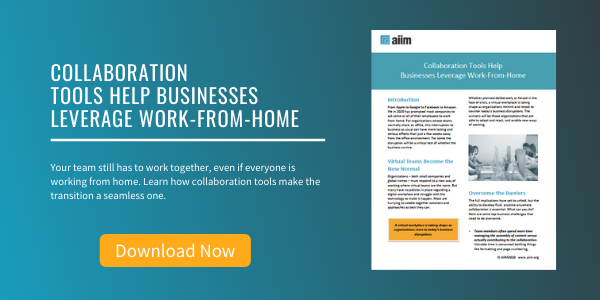
8 Essentials to Consider for Social Computing and Collaboration in Business
2009 was the year for social services taking off for consumers. 2010 seems like the year where momentum is rampantly building for social services and software used in business.
However, risk exposure for organizations actually being successful with social computing and collaboration (SC&C) can’t be ignored. Here are some factors that can contribute to an increased probability of success for organizations:
-
Focus on Adoption.
If Warren Buffett were to simplify SC&C, he would probably say something like: Rule #1, Focus on Adoption. Rule #2, Don’t forget Rule #1. If there is a single criterion to bet on for the success of social computing, it should be to encourage adoption. This is a viral phenomenon, and that is the best part of it. Disproportionately focus effort on adoption acceleration!!
-
Ensure a Very Iterative Deployment Model.
One way to ensure failure in social computing and collaboration is to treat it as an ERP project. This cannot be an 18-month long project. It must have short planning, execution, and iteration cycles with a maniacal focus on the measurement of your collaboration strategy, including behavior, trends, and usage patterns.
-
Recognition of the “Power Law of Participation”
50% of the content on Wikipedia is contributed by approximately 0.5% of the user base. This participatory variability is a fascinating dynamic. And I don’t deserve credit for the concept. Ross Mayfield, the founder of Socialtext, was the first to coin the term “Power Law of Participation.” What is important is to recognize and set contribution targets of your user base for activity, which is much different from consumption targets. If you launch a blog service and 3% to 5% of your user population participates by contributing content, it might be more than enough for the remainder of the population to participate and derive immense value from the exercise of consumption of content. Recognize the significance of this participatory variability. Not everyone needs to contribute for the network to derive value.
-
Identify the Right Skills to Drive the Effort.
Folks driving this effort have to be active users of social tools and socially active individuals. Citing personal experience, it took me six months of using Twitter before I saw the full power of microblogging. Those that aren’t active with these Web 2.0 methods might not be in the best position to drive a strategy that truly understands the fundamentals and the philosophy of the transformation. It cannot be understood purely at a conceptual level. It has to be experienced! Therefore, my next point!
-
Emphasis Should be Placed on Experience, Not Process.
Often times, technology initiatives within organizations place emphasis on optimizing business processes. While process optimization might be the end result of SC&C within an organization, what will drive adoption is an almost obsessive focus on user experience and ease of communication from anyplace, at any time, on any device to any delivery channel. As you develop strategies for social computing, focus on demonstrating how a “day in the life of a user” or activity of a user changes experientially. Sometimes it is simply a scenario that gets enhanced rather than a full process optimization exercise
-
Shoot for Group Productivity Over Individual Productivity.
While social computing is great for individual productivity, it is group productivity that is most impacted. The measure of success should be the removal of silos to enhance group think and surface correlations.
-
Augment and Extend Email, Rather than Trying to Kill Email.
Email to most of us is a necessary evil. We can’t live without it because it is so pervasive, but yet in so many ways, it is tremendously inefficient. And those promoting social computing tend to think that social tools are a refreshing replacement for the antiquated ways of email. While that might be very true, tight integration of your social strategy with email is critical to garnering adoption. A blog service, for example, is nowhere near as useful, unless one can shoot an email that directly publishes a blog post. Microblogging at times can be so much easier via email. Notifications are nice to receive in a unified inbox, which is my email box. Yes, email is not the most efficient document repository, but it is a necessary catalyst to drive adoption.
-
Encourage Transparency for Those Opposed to it.
There are times that employees inherently feel that operating in a transparent fashion will impede their future growth potential at a company. And they aren’t always wrong. Cultures of companies can very well encourage a lack of transparency. The more an environment is created to encourage transparent and open thinking and reward those who are willing to be transparent, the better off it will be in driving purposeful adoption, which is the adoption of tools that have tangible business benefits.



